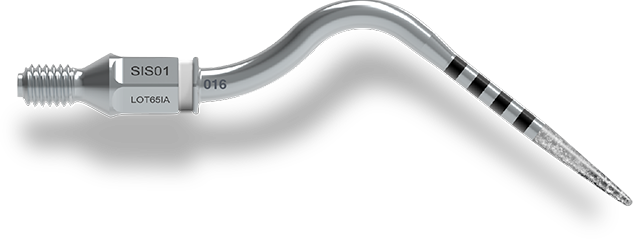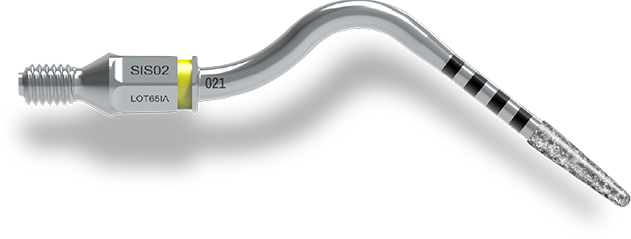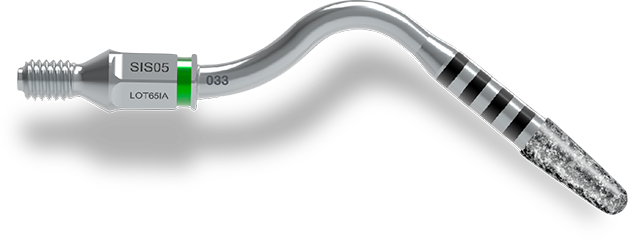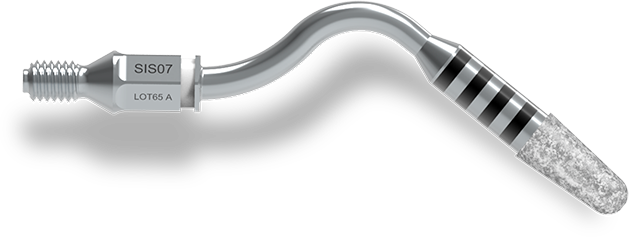Inserts
Sonosurgery®Inserts
General features
New vibrating sonic inserts suitable in all applications of oral surgery, from simple tooth extraction to the most advanced oral surgical techniques. Tailor-made for any operator, from the less experienced who can perform the simplest techniques in all safety, to the most experienced surgeons who can perform very complex and sophisticated surgical techniques.
Appropriate for corticotomy, osteotomy, osteoplasty, root separation, bone particulate harvesting, incision, abrasion, and bone trap-door detachment; Schneider membrane elevation used in sinus-lift technique, access, cleavage and emptying of cysts, implant site preparation etc.
Osteotomies inserts
Micro-saw insert indications
All three micro-saw bone insert blades (registered model), are identical at any angulation. 10 mm total length established by 2 rows of teeth on both sides of blades, spaced 1 mm apart (see drawing). Micro-saws are a mere 0.19 mm in thickness from a maximum of 4 mm to 2.5 mm minimum in width, forming a triangular shape.
-
SBM01
SBM01 straight shank micro-saw insert is over 40 mm in total length. Highly indicated in maxillary mesio-distal and releasing osteotomies. Also recommended in bone cutting to other areas of the maxilla. Most indicated given its extreme total length for mandibular distal sectors as in wisdom tooth area

-
SBM02
SBM02 angled shank micro-saw insert blade orthogonally positioned in respect to the hand-piece axis. Indicated in transverse osteotomies (eg.: releasing mandibular osteotomies as in split-crest technique). Sagittal plane osteotomies performance is obtained by rotating the hand-piece 90° laterally, for an easier access whereby the sagittal insert is inoperable.

-
SBM03
SBM03 angled shank micro-saw insert blade sagittally positioned in respect to hand-piece axis. Indicated for mesio-distal osteotomies in mandibular split-crest technique and other mouth osteotomy positions. Orthogonal plane osteotomies performance is obtained by rotating the hand-piece 90° laterally, for an easier access whereby the orthogonal insert is inoperable.
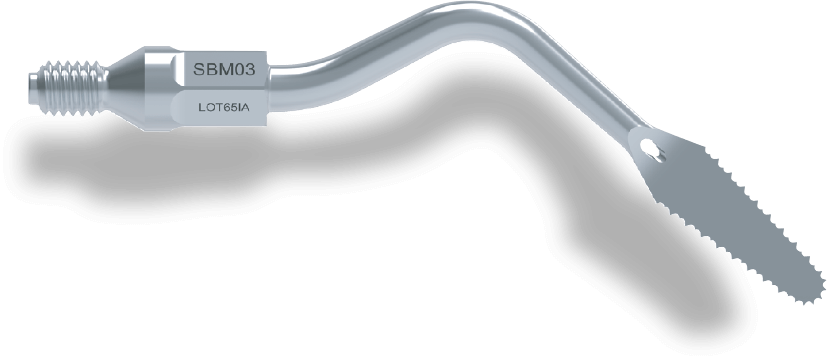

Sinus Lift
Sinus-lift inserts indication
Vibrating sonic inserts designed for lateral access sinus lift techniques. Both straight and angled diamond ball inserts for trap-door bone cutting or erosion removal. Trap-door bone straight insert (scraper), removal also by erosion while forming bone particulate. Trap-door disc insert detachment for Schneider membrane lifting.
-
SSB01
SSB01 straight shank, coarse diamond coated ball insert approx 2.5 mm in diameter. Indicated in osteoplasty to create a side window in the sinus lift technique. Also useful in all cases where bone removal necessary as in impacted teeth bone uncovering, apicectomies, crestal sinus lift osteotomies access, cystic cavities opening, etc.

-
SSBF2
SSBF2 angled, fine diamond coated ball insert approx 2.5 mm in diameter. Same indication as previous insert. Fine grain diamond coating insert is less abrasive, leaving a smoother bone surface and used in refinishing or when less abrasion is requested.

-
SSL01
SSL01 angled shank convex button insert. Indicated for bone trap door minimal invasive mobilisation and delicate Schneiderian membrane detachment in lateral access sinus lift technique. The irrigating fluid hydraulic pressure ejected from the insert tip facilitates the gentle detachment of the maxillary sinus membrane.

-
SBS01
SBS0 straight shank cutting edge-disc insert is indicated in all osteoplasty and particulate bone collection. The production of bone chips size depends on instrumental thrust and speed movement insert onto bone surface.

Bone drilling
Implant site preparation Inserts
Increasing diameter 7 diamond angled shank insert series for implant site preparation: SIS01 1.6 mm; SIS02 2.1 mm; SIS03 2.5 mm; SIS04 2.9 mm; SIS05 3.3 mm; SIS06 3.7 mm; SIS07 4.0 mm. Indicated for implants preparation at every mouth position, regardless of both maxillary and mandibular, anterior or posterior area. Smallest from 1.6 mm diameter, to the largest of 4.0 mm diameter. Whole diamond abrasive surface insert 8 mm in length, laser-marked notched every 2 mm, easily identifiable at 10, 12, 14, and 16 mm, to monitor bone insert depth. Another feature is the ISO color code diameter recognition, present on the hexagon and numeral diameter measurement conveniently reported on the stem too.
-
SIS01
SIS01 Pilot diamond insert 1.6 mm diameter, white color coded, side irrigation hole. Used to start preparation for implant site; after having drilled the bone cortex with a lanceolate drill.
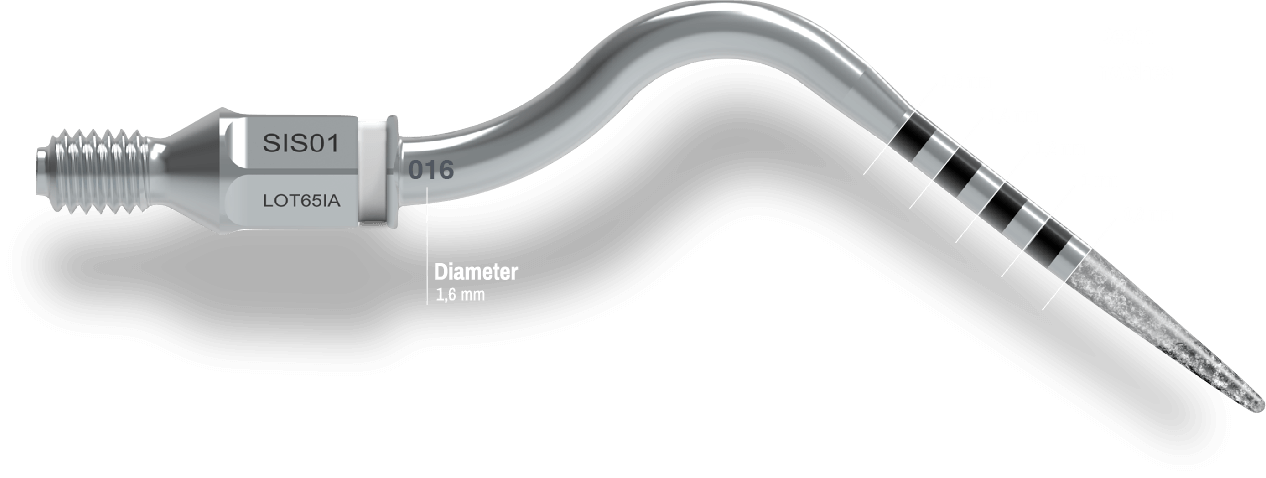
-
SIS02
SIS02 Second diamond insert 2.1 mm diameter, yellow color coded, side irrigation hole.
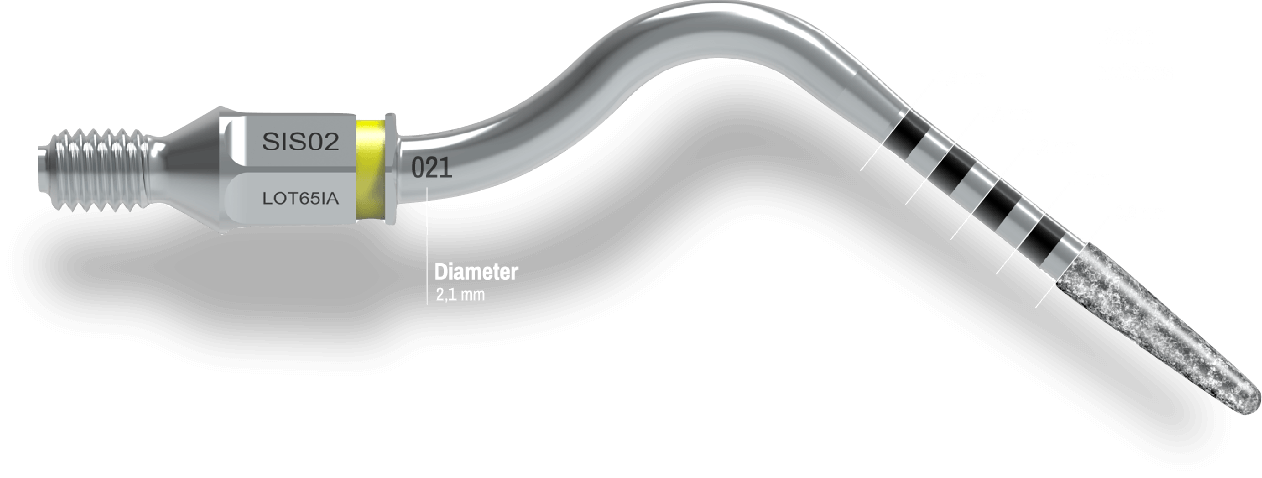
-
SIS03
SIS03 Third diamond insert 2.5 mm diameter, red color coded, side irrigation hole.

-
SIS04
SIS04 Fourth diamond insert 2.9 mm diameter, blue color coded, side irrigation hole.

-
SIS05
SIS05 Fifth diamond insert 3.3 mm diameter, green color coded, irrigation hole at tip.
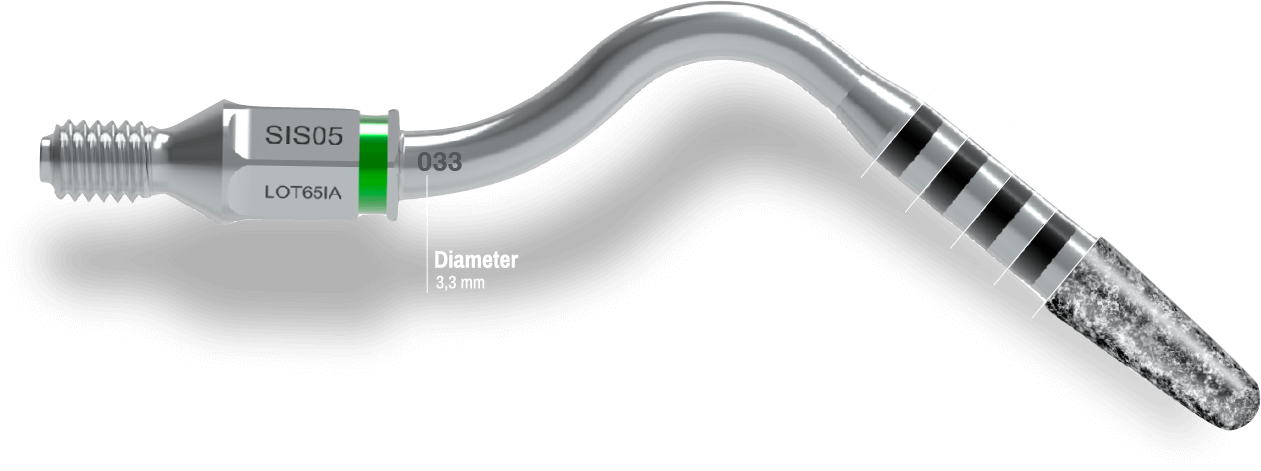
-
SIS06
SIS06 Sixth diamond insert 3.7 mm diameter, black color coded, irrigation hole at tip.
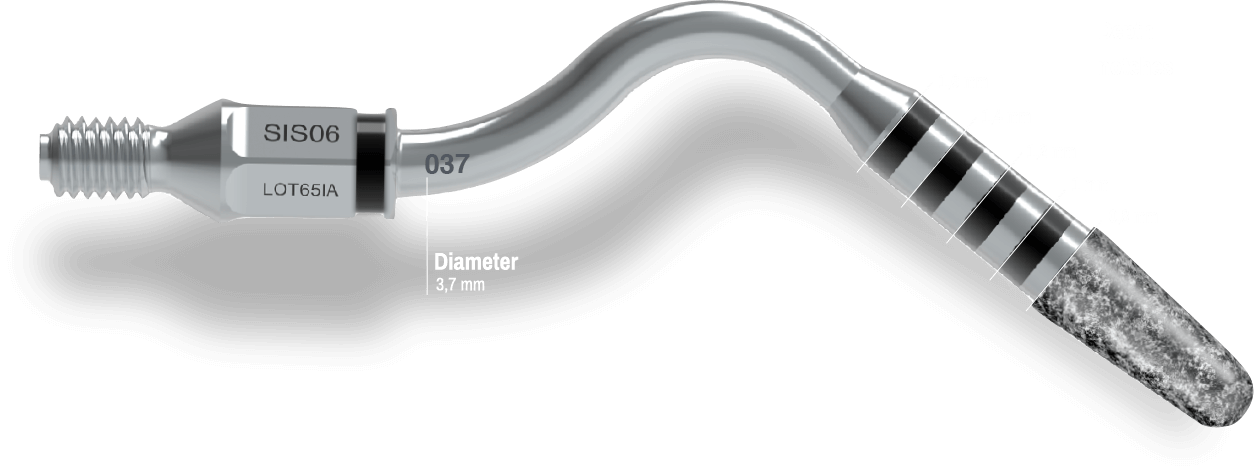
-
SIS07
SIS07 diamond insert 4.0 mm diameter, (last in series) white color coded as the first 0ne, irrigation hole at tip. Impossible to confuse with the first, owing to its greater dimension.






